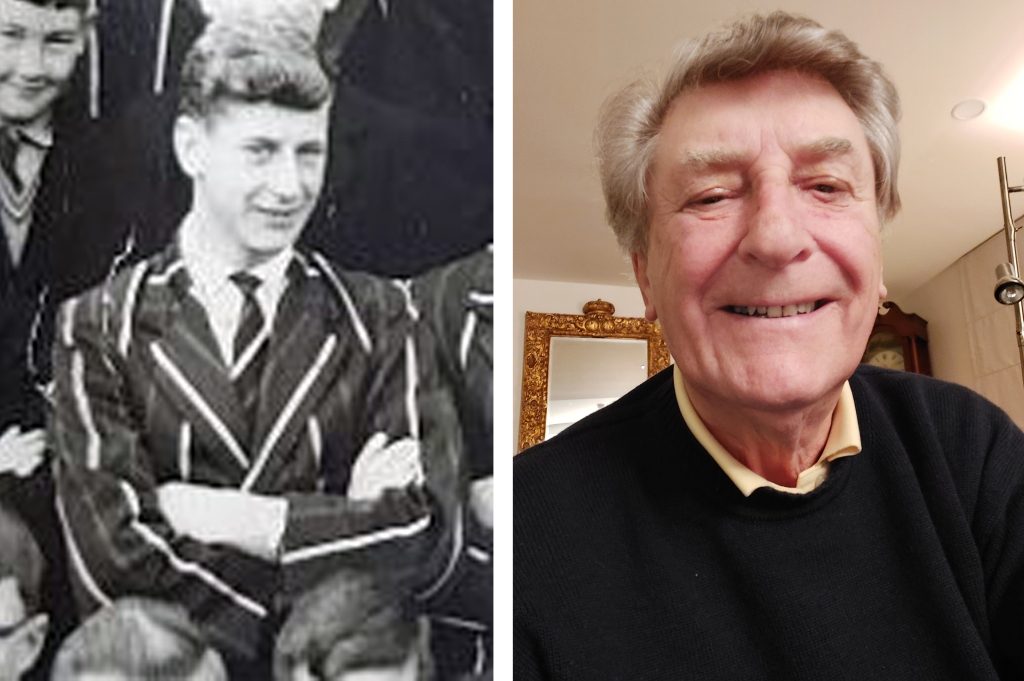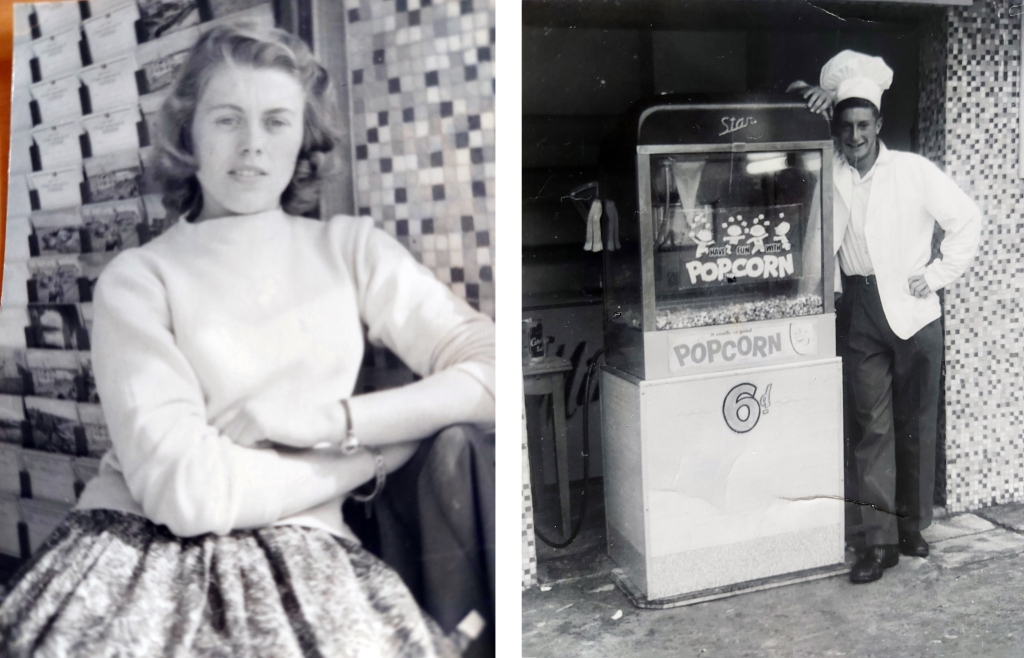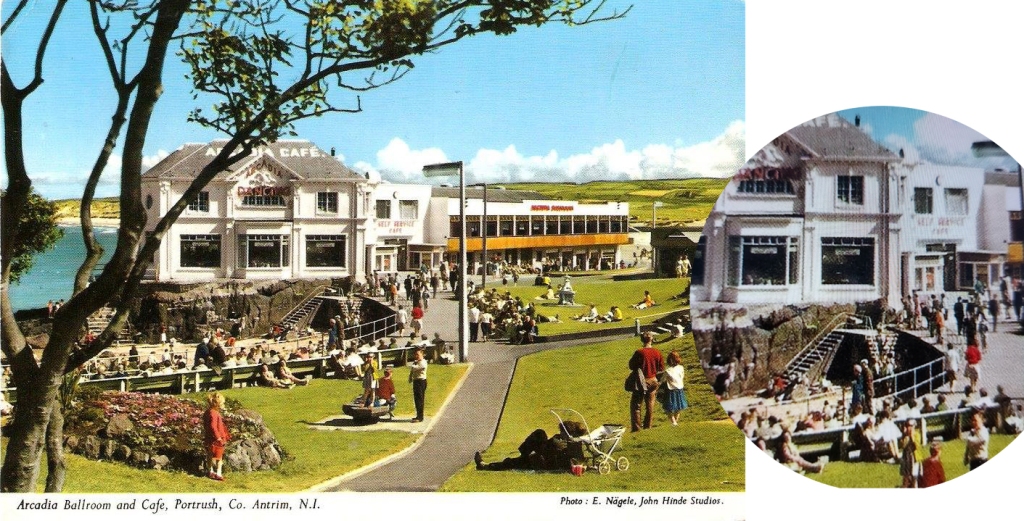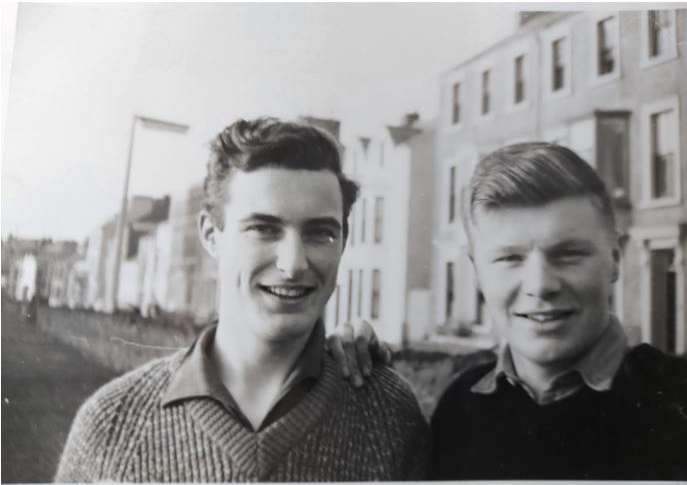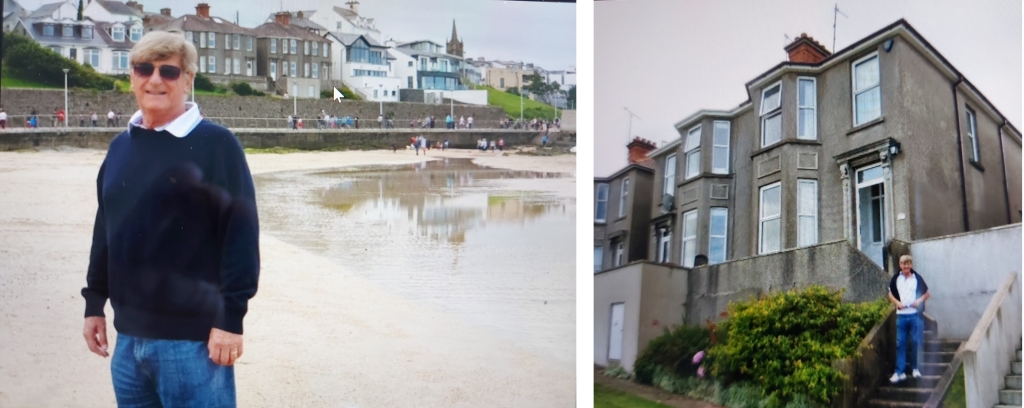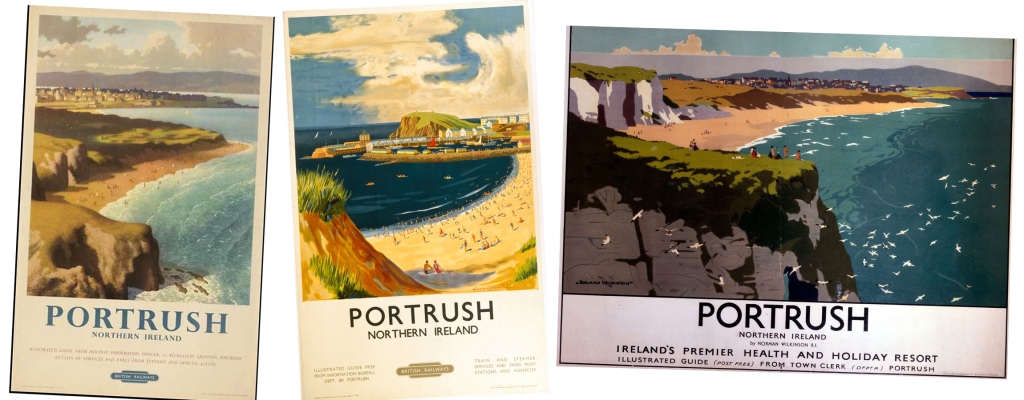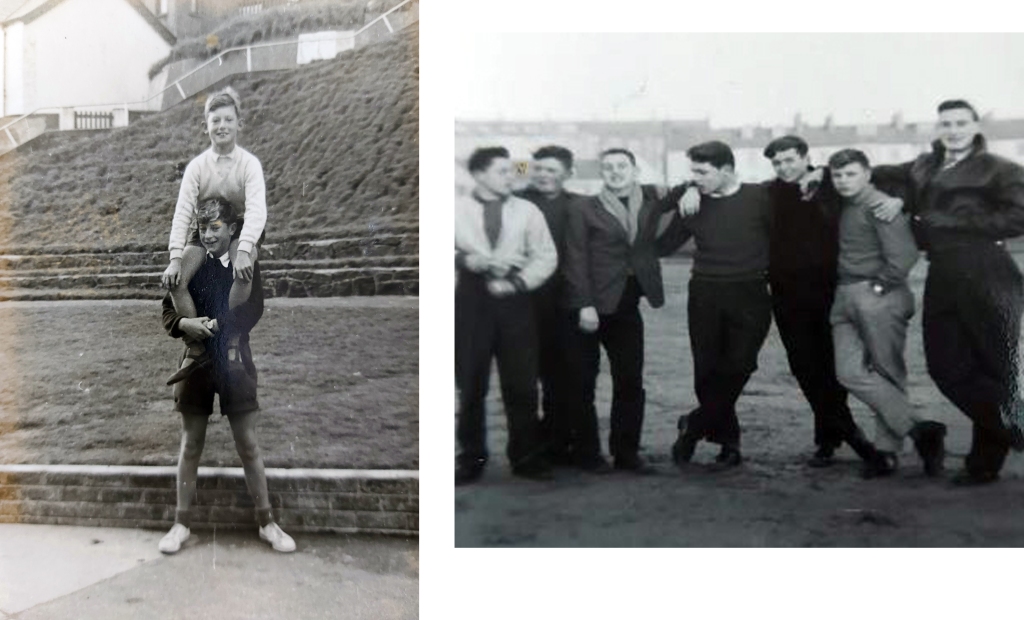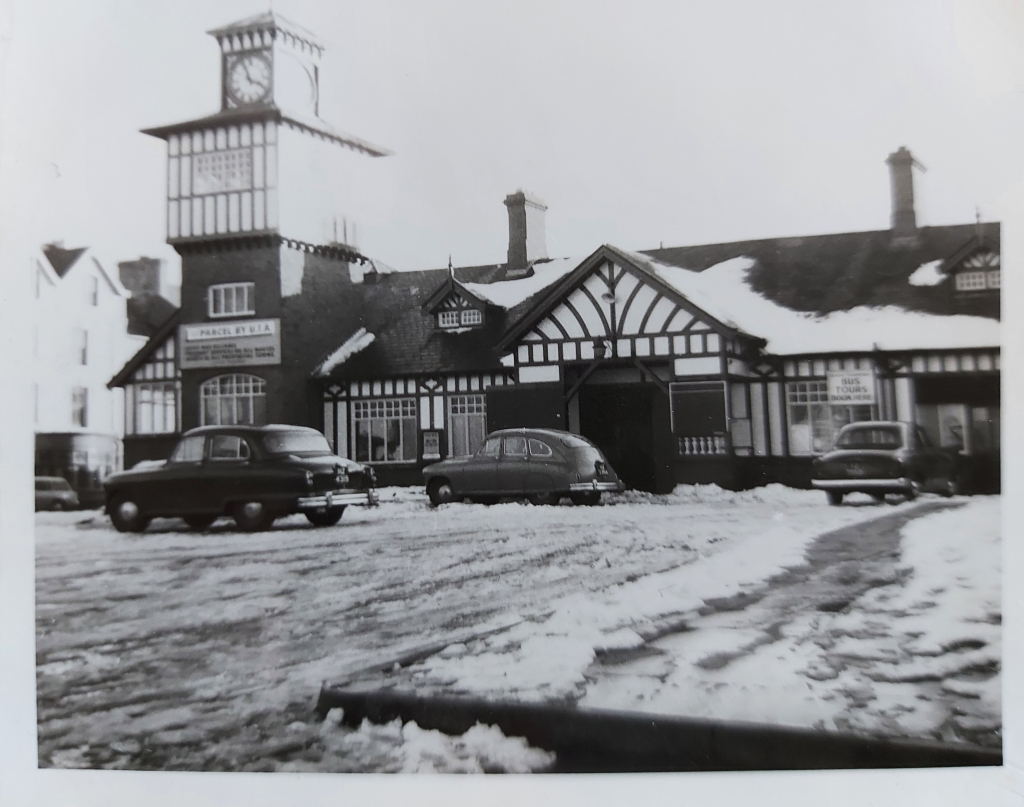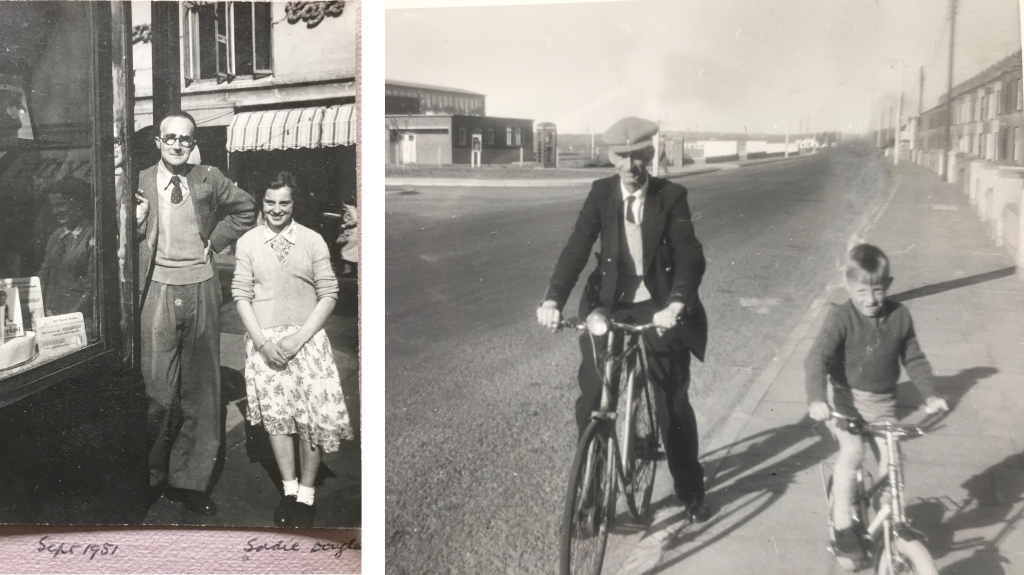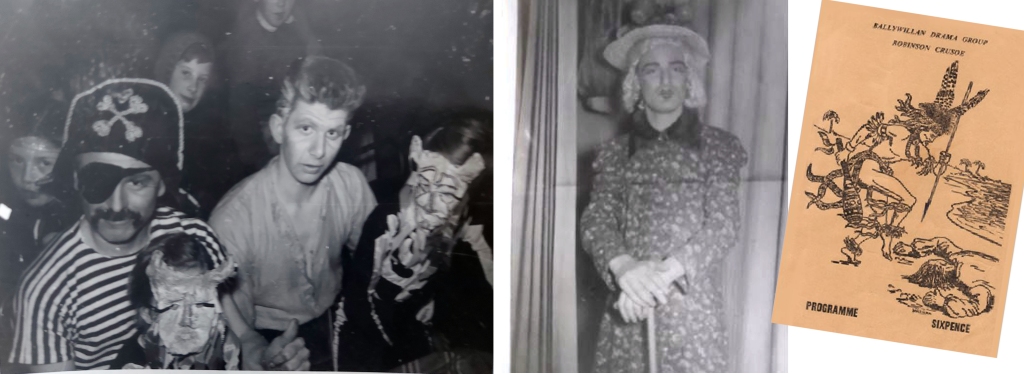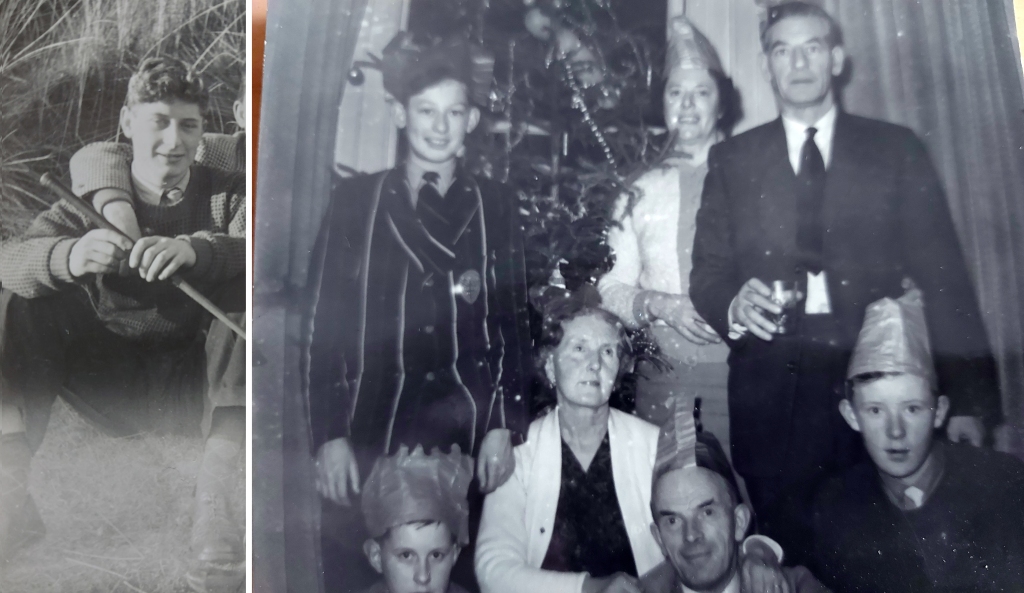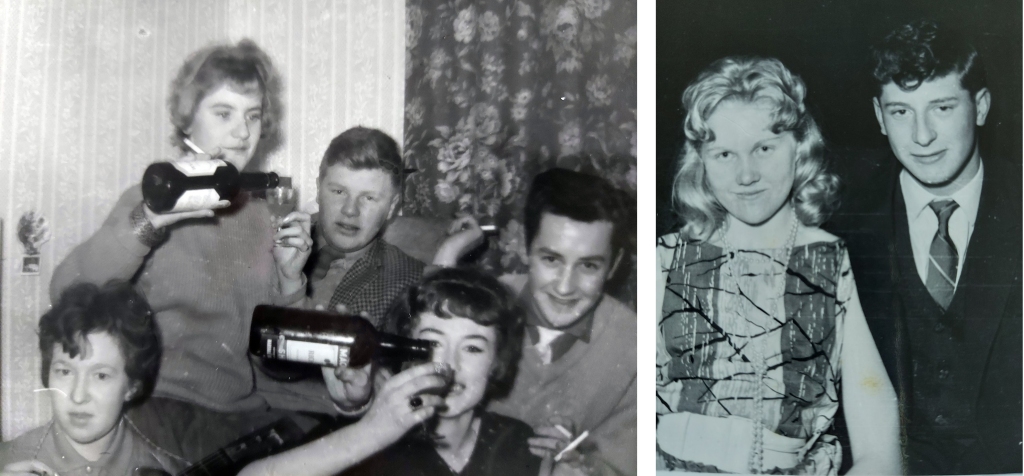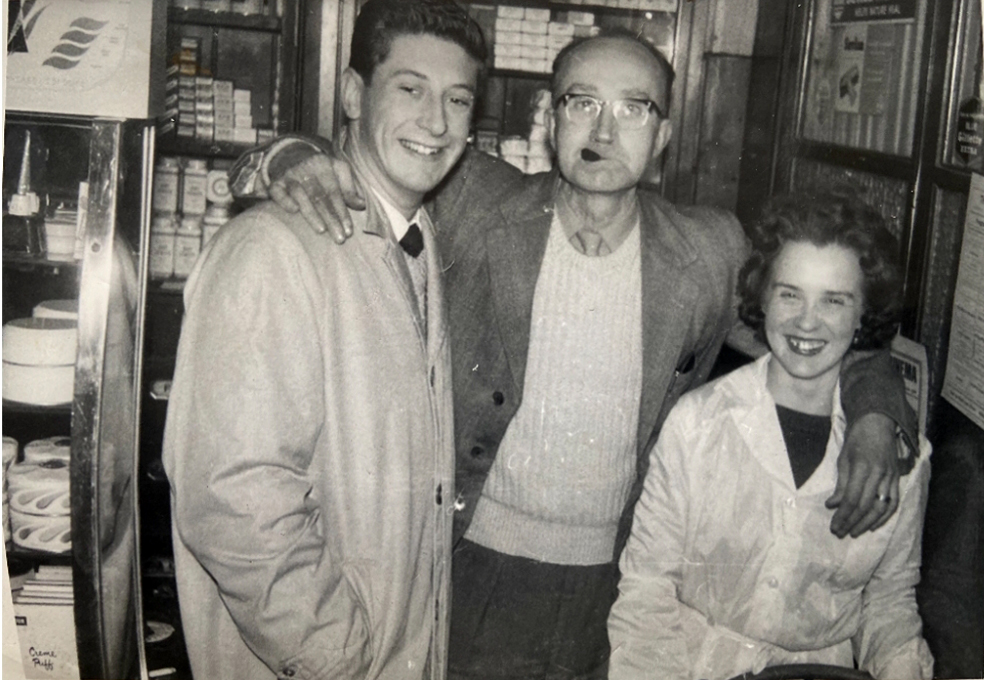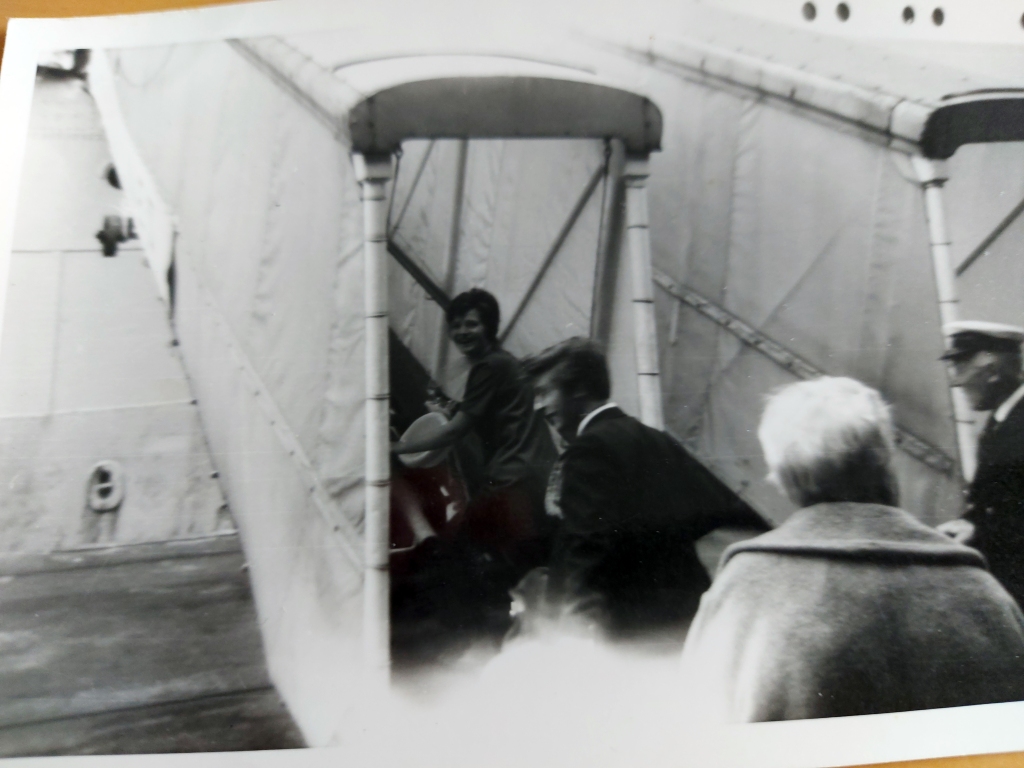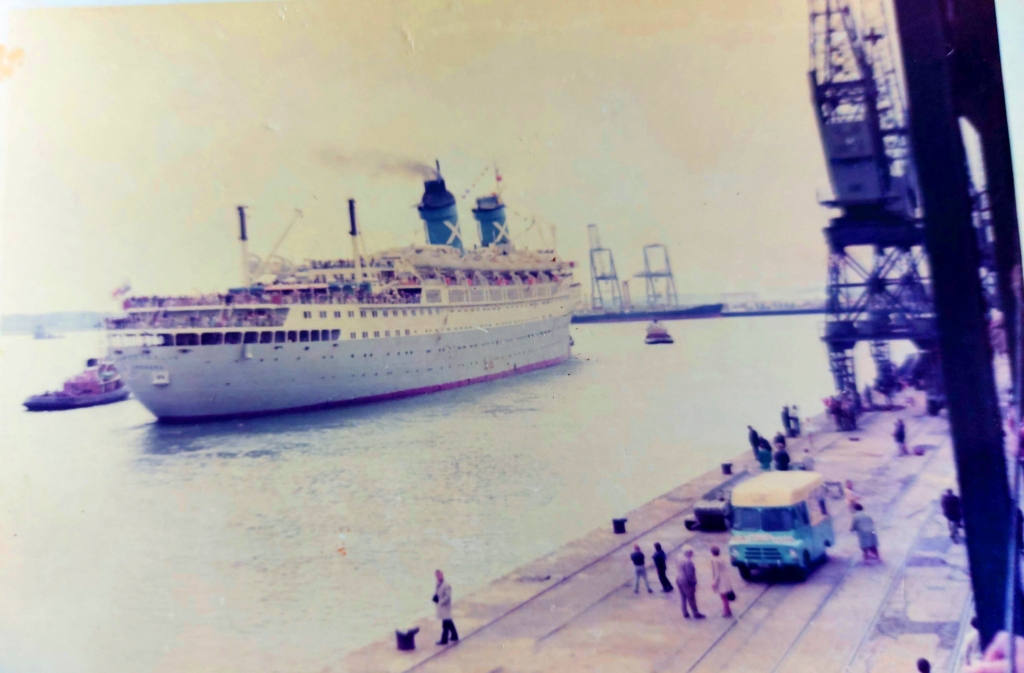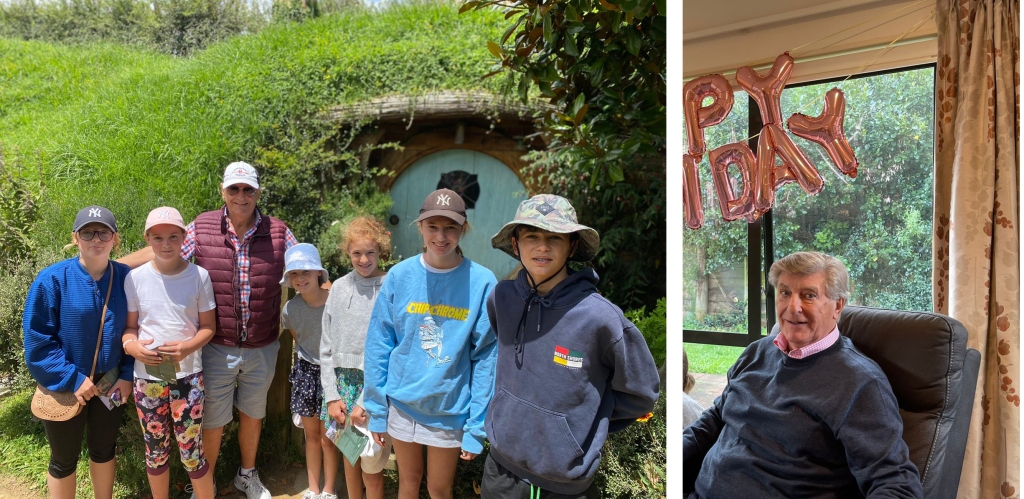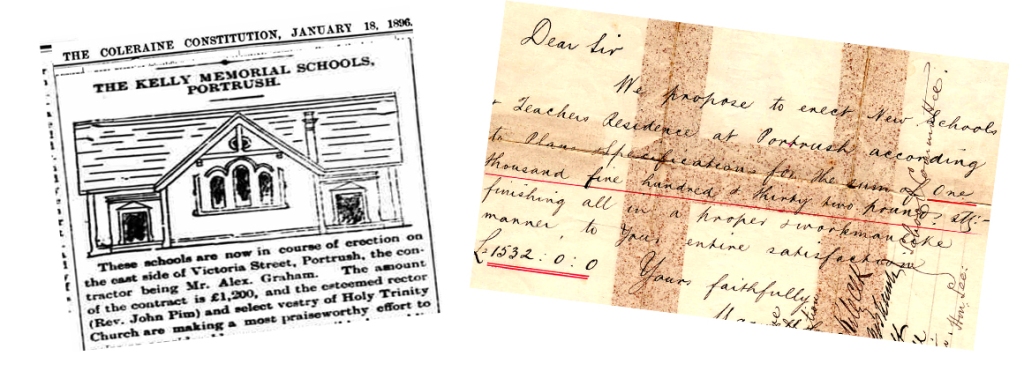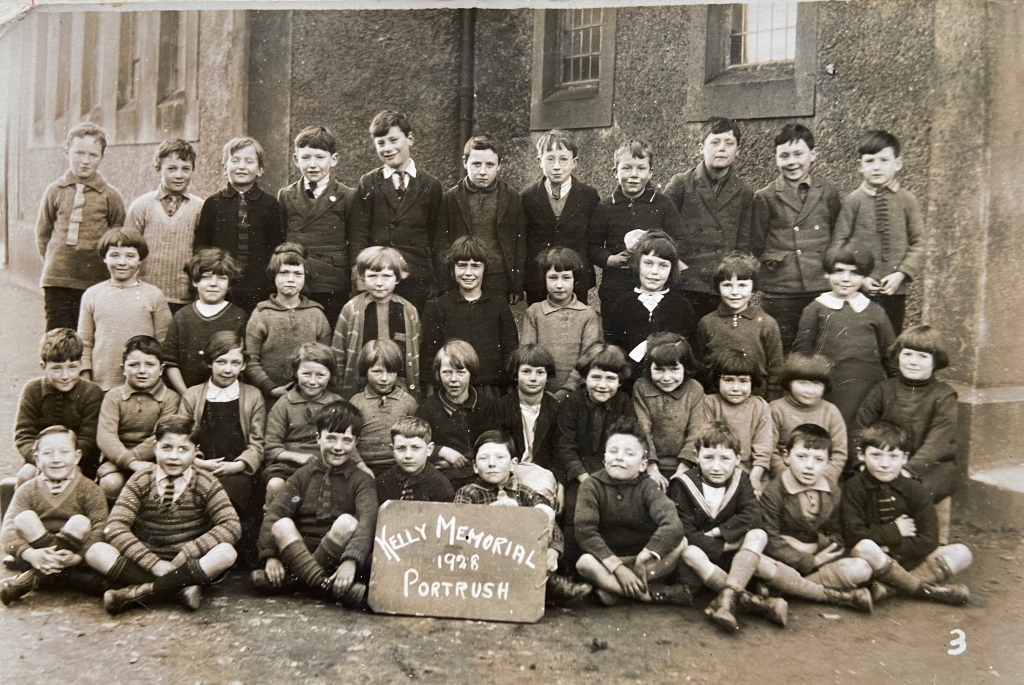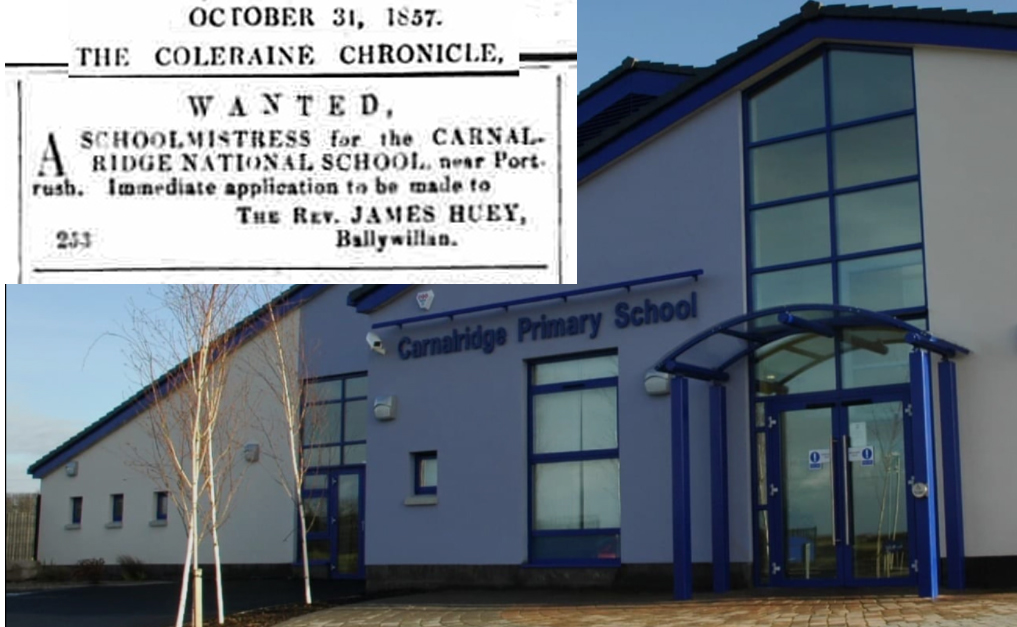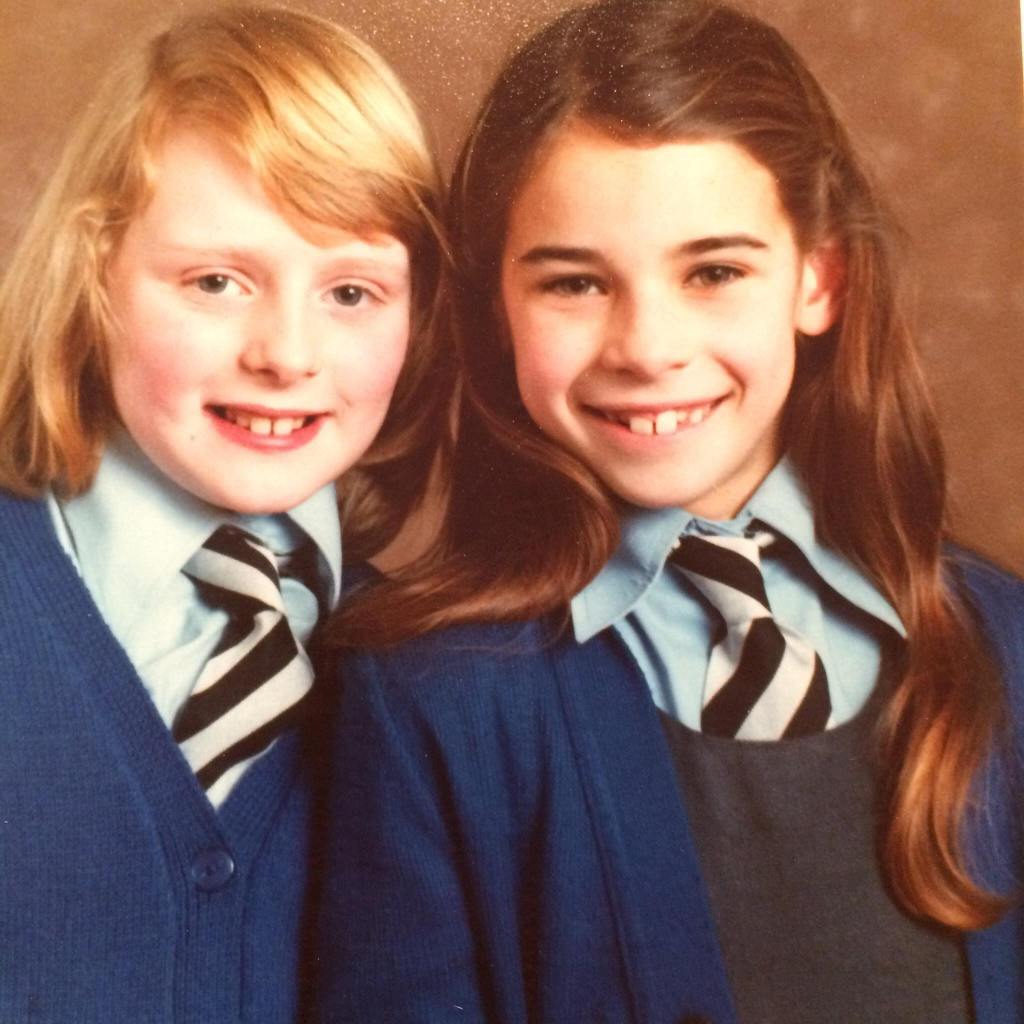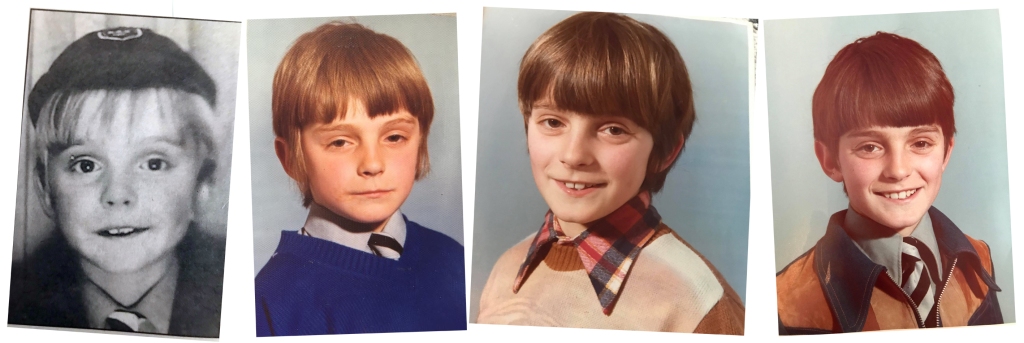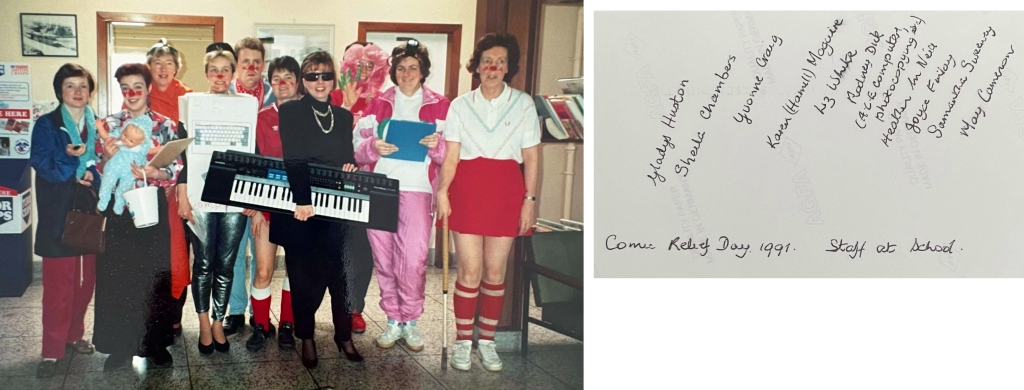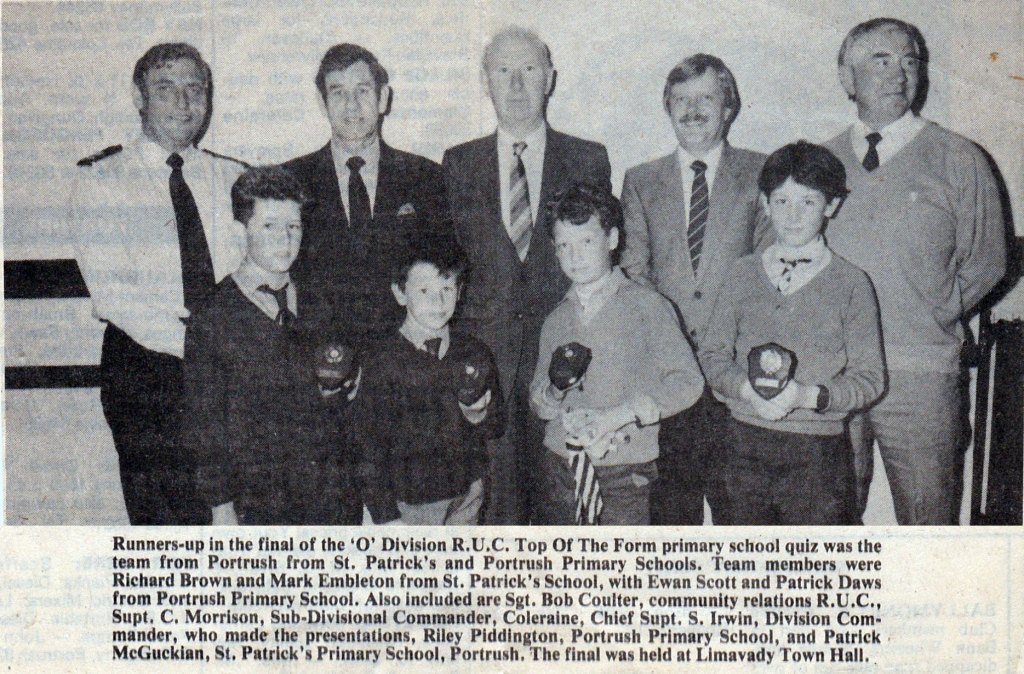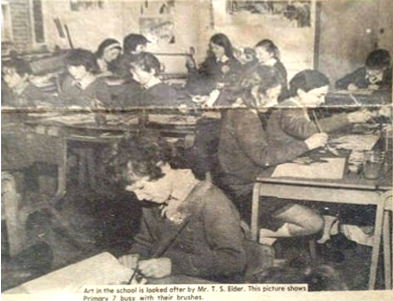“Members of the Holy Trinity Badminton Club, Portrush, pictured with trophies won in a very successful season.”

The Kelly Hall was used too for bowling and the Church Lads Brigade and other activities under the auspices of Holy Trinity church, Of the Holy Trinity Badminton Club, Cyril Davison started it up in about 1970, and I started playing there when I was still primary school age. It met first in Dunluce St hall – I guess that site became the Gold Rush arcade. The club was amazingly popular, so much so that Cyril had to arrange us in pairs, lined up either side of the hall, hitting the shuttlecock across to each other – as he said, it was the only way to ensure that everyone got a chance to play and practice.
The club then moved to the Kelly Hall when it was refurbished. The club developed really well and there were a few of the teams at various levels in local leagues, with awards like in the photograph above.

League match nights, and regular club nights – and some mucking about nights. One evening we were warming up before a game, knocking the shuttle around. One comes over and I swish at it. Unfortunately my partner Kathleen Diamond reaches to catch it, to start serving to start the match. But both her hand and my badminton racquet suffered in the collision. But at least me delivering the ‘Tele meant that I had pocket money to buy the replacement.

Cyril & Margaret Davison were really marvellous, set up badminton at Portrush when I was a kid, working to get the Kelly Hall refurbished and courts marked up to play there, and got the badminton club up and running and doing rather well in the area leagues. Jonny Dobbin says about the 1991 photo, “That was the year that I won the most improved player in the Ballymoney and District league. Cyril coached me – and he was the reason that me and others from the club achieved local, district and country honours.”
I look for photographs of the badminton club but do you remember the 1970s, the days before mobile phones and not a million photographs of everything? I had only found the one photograph of the club, and then Clive Shorter produced a few more, of 1977. But David Downs says, “If only we had camera phones back then, knock knees Martin wouldn’t want any images around a badminton court even if he was OK at it.”
That photo, below right, of me practicing in our house, about 1974. My knock knees pose must have been good enough to earn those little medals and prizes, encouragement for improvement over the year.
My regular playing group was that under-16 team shown on the left (and all the lads were golfing buddies too – though I have no idea why Andy H has a shuttlecock on his nose). It was great tragedies that Sandra C and Janette K, school classmates, were taken away too early from us.

George Shorter remembers Cyril’s great humour. “I always remember Cyril walking into the Kelly Hall and asking ‘Can anyone ride a bike?’ If you replied Yes enthusiastically, he replied, ‘Well come and help me get this stuff out of the car.’
League matches meant traipsing around to badminton clubs at back-of-the-end-of-the-earth places – Hoescht social club, the Strand club in Portstewart, Aghadowey, …. One hall out in the country somewhere, so narrow there was just room for the badminton court, with about 1mm separation to the wall. Cyril and Margaret willingly going with the teams when required.

About 1977, and into the dizzy heights of the Minor C league, and photos include Tom Hentry, George Harkness, Tommy Peters, Eva O’Neill, Sandra and Heather Crawford, Thelma, and Cyril & Margaret, Sammy & Sadie and ‘the splendid array of trophies’
(all badminton newspaper cuttings courtesy Clive Shorter. But oh dear I can’t remember all the names, let me know of any blanks !!
An annual feature of the club was the 24 hour badminton marathon, for fund-raising. They were great fun, and especially the lovely cooked breakfast on the Saturday morning. We really appreciated the effort everyone put in to support the activities. Badminton marathon, early hours of the Saturday morning, I always remember, Mr Sam McGuinness come along, just sitting quietly watching, but just such as encouragement that he took the time to come out and support the event.
A story from me? It is Easter holidays from school. One afternoon, me and Kyle and George and Mark McC get the Kelly Hall door key to go in to play for a few hours. Oh, nuisance! the bowling mats are spread out. We push them over to one side and set up the badminton net so that we can play.
Later, the caretaker tells us: she had spent hours doing the laying out the mats and vacuuming them, to perfecto bowling green flatness for the match that evening. And we had just pushed them over to one side against the wall, and then pulled them back after our games. She had to do the preparation all over again. And we got the rollicking.
Ken Mcallister: “We used to watch the caretaker lock up after setting up the net for the evening, and Denny Mcaleese and I watched him putting the key under the mat. Two hours playing badminton – pure luxury.”

About 1977: Sammy & Sadie Kane, Clive Shorter, Cyril & Margaret, Tommy Peters, Thelma, Elaine Adjey, and oh dear but I can’t remember all the names – well it is 45 years ago !!
As well as at the Kelly Hall, Cyril also did badminton coaching at the primary school, including to Jonny Dobbin in the mid-80s. The badminton strip and the football strip are surprisingly similar! (“Those horrible sports strips for all sports. Absolute nipple wreckers!” , says Jonny.)
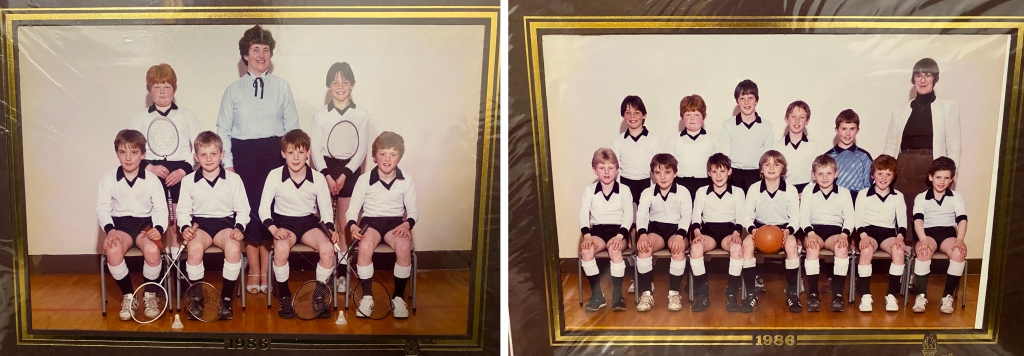
Photos, 1986. Sports strip, similar between badminton and football teams?
Cyril also taught badminton at the primary school, teaching Jonny in the mid-80s. Badminton. Starting back row left. Jonny Dobbin, Miss Steele, Richard Hassan. Front row from left. Shane McDonald, Richard Kettyle, Peter Smyth, Stephen Mckenzie
Football. Starting back row left. Richard Hassan, Jonny Dobbin, Edwin Burgess, Rowland Robinson, Nigel Smyth, Miss Boyd. Front row from left. Peter Elliott, Shane McDonald, Peter Smyth, Jason Quigley, Richard (Archie) Kettyle, Stephen Mckenzie, James Allen
Cyril was heading towards retirement in the late 1990s, with some months back and forth to Spain, continuing to coach badminton to kids in Spain. Jonny Dobbin, back in Portrush after uni, stepped up to take the club forward in the late 1990s.
Raymond Mcneill: “Well done Cyril & Margaret! An account of badminton days gone by. When the Saturday night at the ![]() was brilliant, ending with fish & chips and Match of the Day!
was brilliant, ending with fish & chips and Match of the Day! ![]() it!!”
it!!”
David: yup, agreed! Battered sausage and chips at the Dolphin, on the way home!
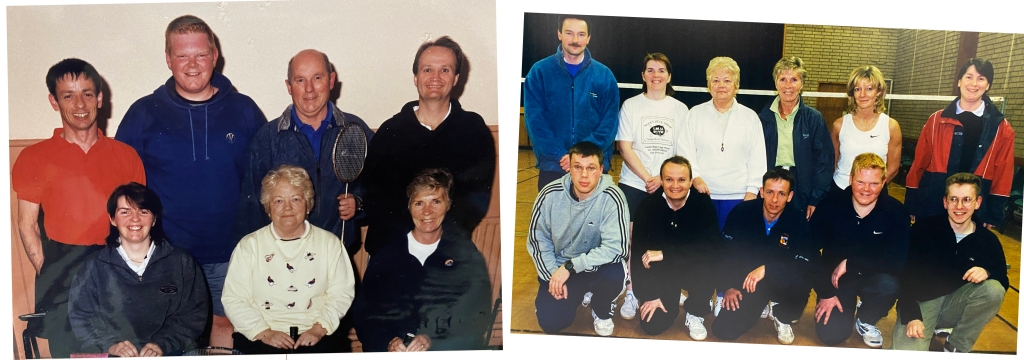
On the left: winners of the Ballymena & District League & Cup, 1999: Clive Shorter, Jonny Dobbin, Cyril Davison, Steven Hastings; front: Sharon Kennedy, Margaret Davison, Margaret Weir
Right, back row: ladies Sharon Kennedy, Margaret Davison, Margaret, Pamela Smyth
Front row: William Snelling, Stephen Hastings, Clive Shorter, Jonny Dobbin, Tommy McCarroll

Left: the junior members who represented Ballymoney and District at the Jack Wilson Trophy (all Ulster under-17 years old badminton districts) – Andrew Harte, Johnny Dobbin, Anne Hopkins, William Snelling, Aslan Bucukoglu
Anne Hopkins. “Yes me in centre. I was only around 13 at the time and don’t remember much about it but I remember going to Donegal and playing badminton in the tournament.”
Right: the Junior badminton club in 1991. Back row left to right: Alan Stewart, Steven McMinn, Jonny Dobbin, Cyril Davison, William Snelling, Chris Graham, Richard Weir. Front row: Rosemary Payne, Katherine Snelling, Claire Mclain, Anne Hopkins, Andrea Weir
Jonny records, “Cyril & Margaret were so awesome, they coached at the badminton club from about 1970, and they taught me at primary school sports as well, in the mid 80s. So appreciative of Cyril’s coaching, and that Cyril was the reason that me and others from the club achieved local, district and country honours.”
Aslan Bucukoglu: “Thanks for this article. I play 3 times a week during the season in Edinburgh and I remember Cyril every time I step on the court.”
Karen McQuilkin: “I have so many wonderful memories of playing badminton at Trinity Hall. Cyril was the heartbeat of the club, and I am very grateful to have been coached by him. “
Geoffrey McKillop: “Cyril was a real gentleman, a unique character, someone I knew very well back in the late 70s early 80’s … A great badminton player in these times, very involved in Holy Trinity in Portrush at that time along with Margaret his lovely wife. Both of them were very giving of their time & gave so much back to their community..… ![]()
![]()
![]()
![]()
![]()
![]() “
“
When I played in the 1970s, badminton club nights were Wednesdays and Saturdays. The Church Lads Brigade, CLB, with folks like buddy Kyle Miller, met in the hall as well, on Fridays. And George Shorter in Hamilton Place says he was in those two organisations and also in the Bowling club – he was in the Kelly Hall every evening of the week. At least as important as badminton skills, I’m sure that tact and diplomacy are important parts of any town or church activity, like with the Kelly Hall where so many different groups and users were vying for the hall. But I think Cyril and Margaret, and Sammy and Sadie Kane, were really great at just ensuring everything went smoothly. I think it was Sammy that pulled together a few bowling evenings, where the badminton folks would play the bowling club. As you would expect the bowling club won, but at least my rink managed one draw, our best result. I remember at that evening that Sammy spoke about the value of church togetherness and of the younger and older folks being together. Sammy was also a leader in the CLBs as well and the lads appreciated his leadership, with courtesy and respect.
And the example of contribution to the community too: sometimes with Cyril’s coaching would be interrupted as he heard the fire station siren and dashed off to serve the community. And the club played variously in Coleraine and Ballymoney and Ballymena district leagues. Jonny says of lots of late nights through the week and lots of inter-district events at the weekends, and really appreciated that senior members gave up a lot of their time to ship the younger players around the church halls of Ulster and then up to Belfast for the ‘majors’ games.
Steve McMinn: “Great article David. I played for Cyril and Holy Trinity for years and extremely honored to have been mentioned in the article. Since then I have played badminton all round the world. I recently moved home, where I still play and set up the local kids club at UUC, now called ‘Smashers’. I’m pleased to know that Cyril had recently found out that I was coaching the kids club and I was hoping to re-connect. I hope that gave him great satisfaction, as it would not have been possible without him. Thank you for sharing his story as I talk about him all the time, and I am glad he gets that recognition for all his work. With thanks, Steve.”
So, years of playing and coaching badminton at the Kelly Hall in Portrush and of supporting the Coleraine and Ballymoney and other leagues and clubs in the area, and their work and service in the community. So much respect for Cyril and Margaret Davison, for the parts they played in training up youngsters in badminton skills with others following on in coaching in various places based on their example, and all with the life lessons from their example too.
———
Newspaper cuttings & photos, courtesy Clive Shorter, Jonny Dobbin, Andy Herron, David Martin
There were especial tributes to Cyril Davison, is this version:
https://portrushstories.wordpress.com/2022/11/05/cyril-davison-a-tribute/
Link to Index of ‘Portrush Tales’ topics, you will find stuff of interest, I am sure!
https://portrushstories.wordpress.com/2023/09/14/index/



















































